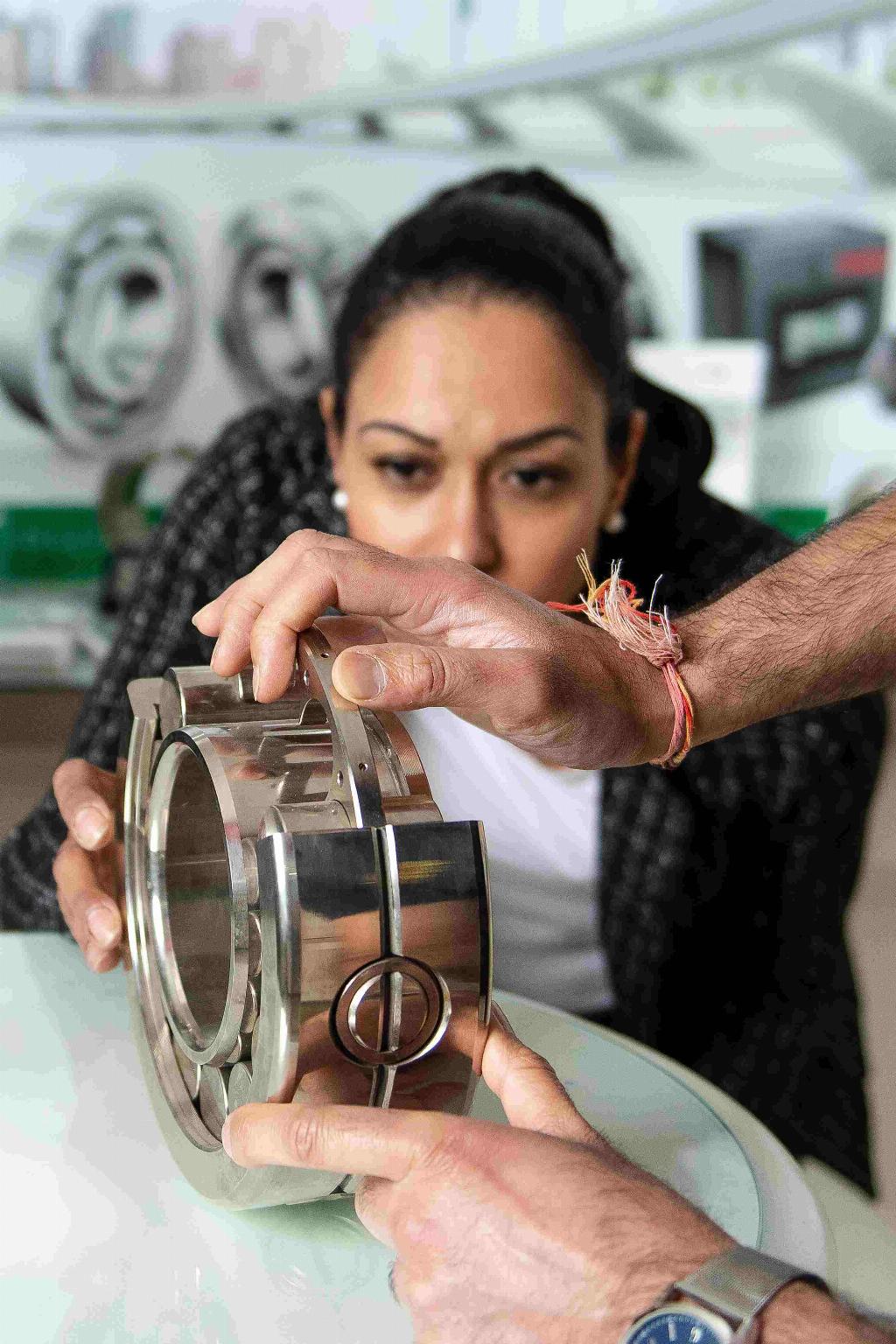Getting your bearings on innovation

Keeping abreast of technological innovations is challenging, but what if something as simple as changing your bearings could increase plant productivity and reduce costs? Jane Curtis, bearings product manager at Brammer Buck & Hickman, looks at some of the most recent innovations in bearing technology that could directly impact the aerospace industry.
Keeping abreast of technological innovations is challenging, but what if something as simple as changing your bearings could increase plant productivity and reduce costs? Jane Curtis, bearings product manager at Brammer Buck & Hickman, looks at some of the most recent innovations in bearing technology that could directly impact the aerospace industry.
It’s difficult enough to keep the lines running at maximum productivity and minimum cost without having to think about how a new product might work better, especially when you take into account the natural tendency to replace like with like and remain within the OEM machines guidelines. We’re all familiar with the age-old saying “If it’s isn’t broke, don’t fix it”.
However, sticking with what you know could mean missing out on valuable new developments in bearings that have been designed to either solve problems that have been identified or to work in specific conditions and industries. Developments have been made in a number of key areas, including the material from which they are made and lubrication, which is highlighted here.
Sticking with steel?
Steel is the traditional choice of material for bearings, but alternatives are now impacting the market.
Hybrid products offer a combination of steel rings and rolling elements manufactured from silicon nitride (ceramic) are becoming increasingly popular. Designed to be dimensionally interchangeable with all-steel bearings in many cases, they help to increase reliability and robustness and provide excellent electrical insulation. Hybrid bearings also have a higher speed capability, are more resistant to potentially damaging abrasive particles and will, therefore, provide a longer service life than all-steel bearings in most applications. Versions have also been developed for use in electric motors which are more susceptible to damage caused by the passage of current.
During the last three decades, there has been an evolution in the advancement and use of highly engineered plastics in bearing application. Polymer-based materials, such as Teflon, Phenolics and Nylon, offer many benefits when used in less demanding environments where temperatures and stresses on the materials are less exacting, including part longevity, strength, corrosion resistance, and reduced need for lubrication.

Teflon (PTFE), developed as a by-product from the 1960s space race, has the advantages of a low friction material combined with high self-lubricating characteristics. Chemical ingress has very little or no effect on the substance and it can perform comfortably across a range of temperatures from -21°C to +180°C continuous, to 285°C short term. As a result, this makes bearings manufactured using Teflon technology ideal for use in applications where the bearing is subject to prolonged exposure to weather, water or chemicals. However, the downside is that these bearings can be expensive in comparison to traditional metal.
Two other materials worth a mention are Delrin, which is used in automotive, appliance and industrial applications where its low cost and water resistance makes it an attractive option, and Ultrahigh-molecular-weight Polyethylene (UHMWPE). These boast a smooth, low-friction surface and offer a great alternative to parts typically made from acetal, nylon or PTFE material.
New approaches to bearing lubrication
With 21% of bearing failure due to foreign matter ingress and 13% due to lubrication failures, developments in bearing friction, lubrication and wear have been a major focus for bearings manufacturers over recent years.
Pre lubrication has seen some of the most important innovations, such as in the application of polymer materials and thermoplastic resin to reduce maintenance requirements. In this approach, the lubrication entirely fills the bearing to coat all rolling elements and raceways with an even film. Holding up to four times as much oil as a traditional grease-filled bearing, the polymer material releases oil gradually around the moving parts to maintain the consistent coating. As the oil remains in position within the bearing, both particulate and fluid contaminants are kept out, while remaining resistant to chemicals which can damage seals and introduce foreign bodies. Such bearings are ideal for inaccessible or remote applications where re-lubricating and maintenance are difficult due to positioning.

Standing up to harsh conditions
Where a site poses demanding conditions, including highly contaminated environments, housed unit bearings are ideal. These have been in existence for a while, but new ones are being introduced all the time.
For challenging, heavy-duty applications, bearings housed in solid steel are ideal. One such new bearing features an extended black oxide inner and a relief valve for non-purging seals plus, to reduce the risk of contamination as well as lowering lubrication consumption, comes pre-assembled and pre-lubricated.
Another very recent innovation is the first-ever roller bearings with metallic shields to provide protection against external solid contaminants and deliver increased grease retention. Load capacity is increased by optimisation of the contact surfaces and the quality of the steel sheet metal cages which have been processed to increase their resistance and allow better contact with the rollers. This also allows increased operating speeds.
These are just a highlight of some of the latest innovations in bearings that can make a substantial difference to the maintenance needs of your production line. If you’d like to find out more, read the Brammer Buck & Hickman ‘Bearings Innovations: Their impact on improving production efficiency, reducing costs and extending component life’ white paper which can be obtained at www.uk.rubix.com/bearingswhitepaper












